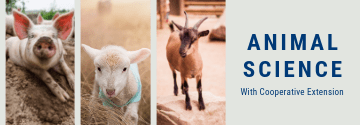When shopping for a new truck, you don’t buy just because the salesman says it’s a good deal. Most shoppers do their research, looking at body style, fuel mileage, towing capabilities, included options and a vehicle history. Shopping for hay should also be carefully researched because making the correct purchase can drastically affect your bottom line. Have you ever met a person that can tell you the value of a truck just by looking at the exterior? Or someone that can tell the quality of hay based on a physical evaluation alone? While a physical evaluation can help us determine several characteristics about the hay, it cannot tell us nutrient content or other potential problems, like nitrates. The only way to know the quality of the hay is by having a forage test done. Knowing the nutritional value of the hay not only helps determine if supplementation is needed, but also will save you money and hopefully avoid any headaches.
Nutrient/Energy Requirement
Knowing what quality of hay you need to purchase all begins with understanding the nutrient requirements for your livestock. Nutrient requirement is the amount of nutrient an animal needs to perform a specific task, or their energy requirement. This is determined by weight, sex, age, growth rate and stage of production. From this we can break down that animal into four nutrient priorities:
- Maintenance
- Growth
- Lactation
- Reproduction
The largest shift in nutritional requirement is the transition from pregnant to lactation. Animals fed differently from their nutritional requirements will either lose or gain excess weight. Something else to remember is that the energy requirement for livestock increases during the winter, 1% for every degree under 32°F. Your county extension agent can help you determine your livestock’s nutrient needs.
Forage Testing
A forage analysis is the only way to assess the quality of the hay. The quality of the forage is focused on the value of each pound versus the total of pounds consumed. There is a physical limit to how much livestock can consume. Digestibility is the ability of the livestock to extract the nutrients from the hay. The primary nutrient found in hay are protein, carbs, sugars, pectins and fiber. When purchasing hay, ask for the forage test results. If a forage test has not been performed on the hay, it something you can do yourself through your extension office. For more details on how to take a good hay sample refer to Ray Hicks’s article in this edition of the newsletter.
Reading the Results
After you receive your forage report, there are some numbers that you want to focus on. Always look at the dry matter levels, not as sampled. The dry matter level is best for comparing forages, ration balance and economic value. Most producers go straight for the protein content, but this is Crude Protein and based on nitrogen levels in the sample. So a sample that is high in nitrates can have a high Crude Protein. Protein is important, but many times is overemphasized. The Total Digestible Nutrients (TDN) is a measurement of digestible energy. This allows you to compare
forages of the same species and compare them to the needs of the livestock. The Relative Forage Quality (RFQ) predicts the energy base based on fiber quality and intake. RFQ allows for comparisons across forage species. We have also been able to link ranges of RFQ to meet the energy requirements for livestock at different stages. This does not mean that a RFQ at that range will automatically provide all the nutrients needed, but provides us with an approximation if the forage will provide a cost-efficient base.
Nitrates are also important to look at. Nitrates over 4,500 ppm need to be fed at restricted rates. As the nitrate levels increase, so does the restrictions on feed until 18,000 ppm when it is considered lethal.
Storage
Another factor that effects forage quality is storage. Hay bales should be stored to protect from rainfall and weathering. Loss from storage can range from 20%-45%. Before hay is stored it should be properly cured. Round bales should be allowed to dry to 15% moisture and square to 18%. Improper curing of hay can result in fires. The best way for hay to be stored is in a hay shed, but if bales have to be stored outside its best they are orientated north/south, the bales are dense and they are elevated. Net wrapping also distributes moisture better than bales wrapped in twine.
Buy by Weight
Finally yet importantly, consider the weight of a hay bale. Whether you are buying square bales or round, consider buying by weight instead of by bale. Humans are not good at estimating the weight of a bale and usually overestimate the weight. So if you can put some bales on a scale and get a good estimate of the lot weight, see if the producer will sale by weight. It will save you some money in the long run.
Summary
- Consider your livestock nutrient requirements
- Forage Test
- Read and understand results
- Compare your forage options
- How was the hay stored
- Buy by weight (if possible)


